Apple AirTag vs Tile Trackers: Which should you buy?
How does Tile's latest lineup of trackers stack up against Apple's?
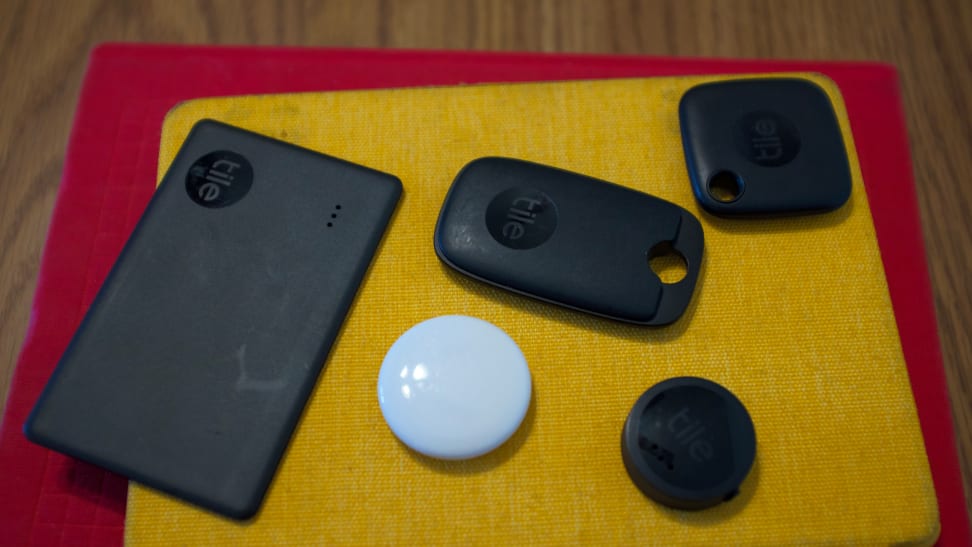 Credit:
Reviewed / Jordan McMahon
Credit:
Reviewed / Jordan McMahon
Products are chosen independently by our editors. Purchases made through our links may earn us a commission.
Tile's trackers and Apple's AirTags may seem similar on paper, there's a lot that sets them apart. Picking the right Bluetooth tracker isn't as simple as grabbing the one with the best price tag or the furthest range. A good tracker needs to be accurate, easy to set up, loud, and play well with all your devices.
While both Apple and Tile excel in all those areas, they implement them in different ways, from the actual shape of the trackers to how they attach to the things you want to track. Either way, you’re investing in an ecosystem that, ideally, you'll be in for the long haul, so you should make sure that ecosystem fits all your needs.
Get the Apple AirTag Get the Tile Tracker
Accuracy
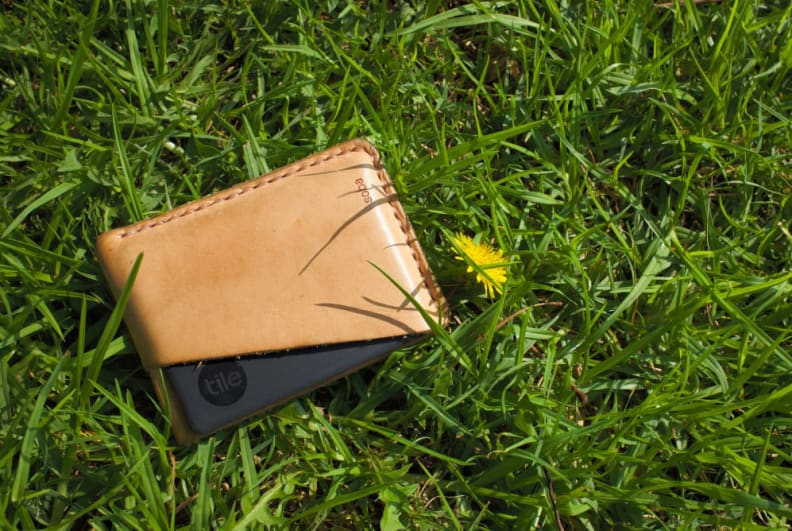
One of Tile's tracker designs is the size and shape of a credit card, so you can easily slip one into your wallet.
Both Apple's AirTags and Tile's lineup of trackers rely on nearby devices for up-to-date location tracking, but Apple's system has a clear advantage: every nearby iPhone turns into a location beacon for AirTags to ping, so there's almost always going to be a way to hunt down your tracker. Tile's system, on the other hand, uses a mesh network of other Tile devices in the area to maintain a connection, so you'll have to bank on there being other Tile users around.
Across all four Tile trackers we tested, we struggled to establish a connection to our phones without being 10 feet or less away from the tracker. Meanwhile, we had no trouble monitoring the location of an AirTag, even when the AirTag was miles away.
You also won't get live updates with Tile's system (unless you upgrade to the Premium tier). Apple's Find My app allows you to view an AirTag's location on a map, and it updates pretty frequently (though not immediately). This never really worked on Tile's map, as it only shows the tracker’s last-known location, rather than an up-to-date pin of where it’s currently located. Viewing a Tile's location history is also locked behind the company's premium service, which costs either $3/month or $30/year.
Our pick: Apple AirTag
Software

Although Tile's products offer a robust set of features, many of them are locked behind a paywall.
Although Apple's AirTags are easier to set up, Tile's system doesn't require much more effort.
Apple's Find My app is already installed on iOS devices, while you'll have to hop over to your respective app store to download Tile's app, and you'll need to set up an account. After that, things are pretty similar: just hold your tracker close to your phone (and press a couple of buttons in Tile's case), tap through a few options, and your new tracker is ready to go.
Apple's advantage comes into play when you start to try out other features. Opening the Find My app makes it immediately clear where your tracker is, and how you can hunt it down. Tile's trackers, meanwhile, can't always establish a connection and show you their current location, which makes the map feature a little less useful.
In addition to real-time updates on your AirTag's location, Apple's Find My app also has nifty live navigation that will point you in the direction of your tracker, and tell you when you're getting closer. Tile will tell you the strength of your connection to your tracker, but it won't tell you what direction the signal is coming from, so you'll spend a lot of time aimlessly wandering around trying to ping your device.
Our pick: Apple AirTag
Speakers
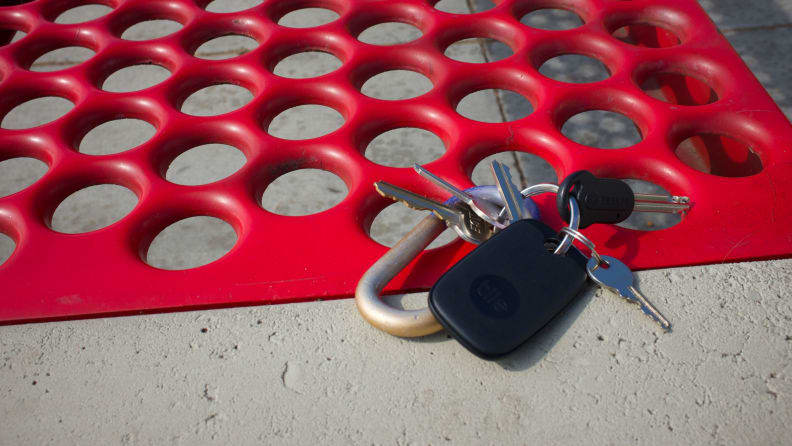
Tile's Pro looks more like a key fob than a tracker, and has the loudest speaker and farthest range of any of Tile's devices.
Across all four trackers, Tile's speakers produced louder sound than Apple's AirTags, and instilled more confidence that we'd be able to detect the sound while searching for our lost items, even in noisy environments.
Tile's Pro, which the company notes as having its loudest speaker, could be heard from up to 30 feet away in our testing, even amid heavy foot and street traffic and nearby construction. The rest of Tile's new trackers, including the Mate, Slim, and Sticker, aren't as loud as the Pro, but their speakers still work great. Despite a consistent breeze, we were able to hear Tile's Mate from up to 20 feet away, and the Slim's speaker was loud enough to be heard from about the same distance even when jammed inside a wallet.
Apple's AirTags didn't fare as well in our testing. Although we could faintly hear the tags through the breeze while at the park, its sound was noticeably fainter than Tile's Mate. Once we drifted more than about ten feet away from the AirTag, the sounds of the breeze and nearby street traffic overpowered the speaker’s faint sound.
Our Pick: Tile Tracker
Cross-platform support
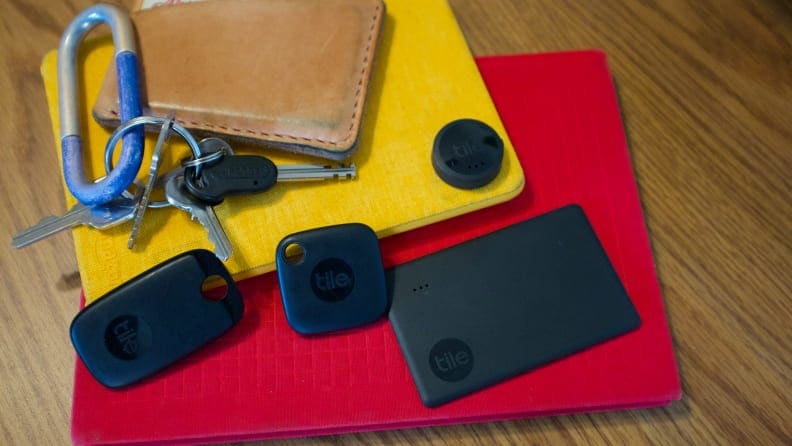
Tile's trackers come in four different form factors, all of which provide a different utility that makes it easy to make sure everything can have a tracker slapped onto it.
Apple's AirTags offer superior tracking when compared to Tile's trackers, but they only work with Apple products. If you're in a mixed-platform household, use varying platforms for work and personal devices, or simply like the ability to hop between Android and iOS AirTags won't be of much use to you.
Tile, on the other hand, works with both platforms. So, if your partner's on iOS and you're an Android user, you can both keep your pet's tracker stored in the Tile app on your phones, as long as you're both using the same account (or share locations with Tile's Premium plan).
Our Pick: Tile Tracker
Design
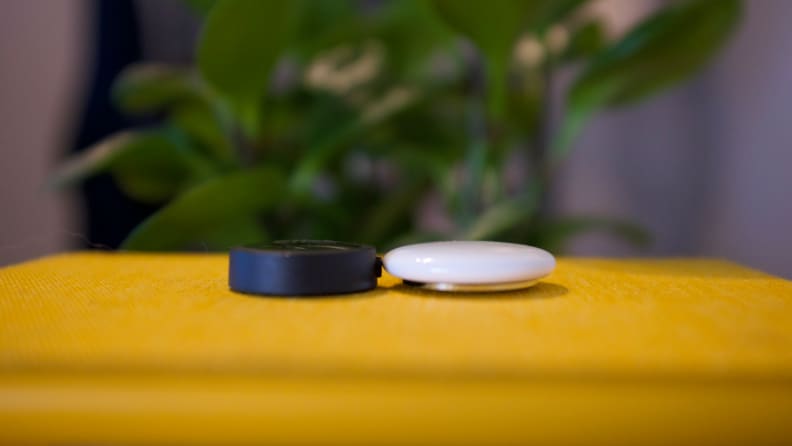
Although Tile's Sticker tracker feels significantly thicker in the hand, it's not that much taller than Apple's AirTag. That said, the AirTag feels much sleeker, and fits into tiny pockets easier.
If you're looking for variety in your hardware, Tile wins here with four different trackers to choose from. The Pro's key fob shell makes it perfect for keeping tabs on your keys, while the Slim can plop right into a wallet or be stuck to a notebook with the addition of Tile's adhesive. The Mate works great as a bag or pet tracker and Tile's Sticker, while chunkier than most other trackers, is also surprisingly sticky, so it's well-suited for tracking heftier items like, say, a bike, without any additional purchases.
Apple's options are much more sparse, with only a single style of an AirTag tracker to choose from: a tiny white disc. It's about the size of a bottle cap, and unless you're tucking your AirTag into a bag's pocket you'll need an additional item to attach your AirTag to the item you're hoping to track since it doesn’t have a hole in it like Tile’s Mate and Pro trackers. Apple sells AirTag-specific accessories for you to do just that, but they can cost anywhere from $13 to $35—or hundreds of dollars more for a designer version.
However, the AirTags's design does have a significant advantage over Tile's system: its battery is user-replaceable. All of Tile's Trackers, aside from the Pro, have non-replaceable batteries with lives of up to three years according to Tile's website. That's a long time, but you'll still have to drop another $30+ for a new tracker when your Tile dies, while just a few bucks can get your old AirTag up and running with a new battery in a jiffy.
So, while Tile's array of trackers offers more versatility in design and functionality, nearly every unique design has a non-replaceable battery, while the AirTag's battery can be replaced in just a few seconds.
Our pick: Apple AirTag
And the winner is...
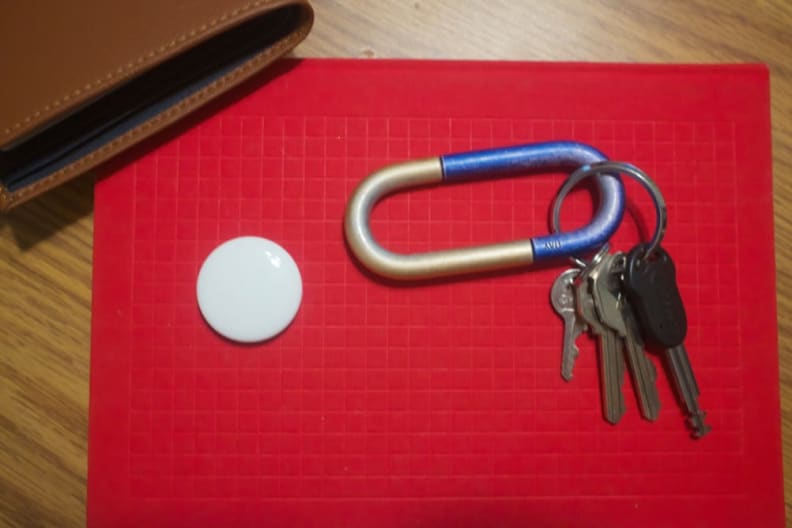
While the AirTag's design doesn't allow you to easily attach anything to it, it's easier to replace the battery than on some of Tile's trackers, most of which lack a replaceable battery at all.
Although we like Tile's broader range of options and louder speakers, those advantages weren't enough to best the AirTags's accuracy, design, and ease-of-use for iOS users looking to keep an eye on all their devices.
While Tile's service does offer things like left-behind notifications and sharing your tracker's location with friends, both require a subscription to the company's Premium service, while all of the AirTag's functionality is offered for free once you've purchased the tracker.
Apple's AirTag also has the advantage of having a user-replaceable battery (which only the Tile Pro offers) and more accurate overall location tracking. While more hardware options would be nice and louder speakers would be nice, their absence isn't enough to detract from the AirTag's strengths.
So, if you're an iOS user looking for the best way to keep an eye on your most treasured items, Apple's AirTag is the best tracker you can get. That said, for those looking for a more platform-agnostic approach, or Android users who need a solid tracker or two, Tile's ecosystem has plenty to offer.


